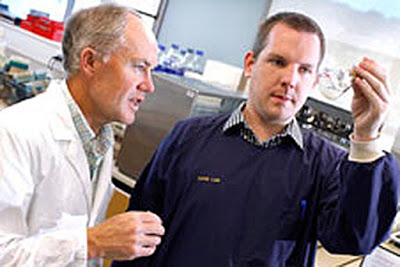
New research by scientists at New Zealand’s University of Otago and GNS Science is helping to solve the puzzle of how bacteria are able to live in nutrient-starved environments. It is well-established that the majority of bacteria in soil ecosystems live in dormant states due to nutrient deprivation, but the metabolic strategies that enable their survival have not yet been shown.
The researchers took an extreme approach to resolving this enigma.
They studied a strain of acidobacteria named Pyrinomonas methylaliphatogenes that was cultivated from heated and acidic geothermal soils in New Zealand’s Taup? Volcanic Zone. Remarkably, the bacterium was living in this inhospitable ecosystem despite its soil lacking the nutrients the microbe usually relied on.
Following in-depth studies on the genetic and biochemical capabilities of the organism, the authors uncovered that the bacterium actually took a highly minimalistic approach to survival. When its preferred carbohydrate nutrient sources are exhausted, it is able to scavenge trace amounts of the fuel hydrogen from the air. To survive, the organism simply requires atmospheric hydrogen and oxygen. It is ‘living on thin air’, so to speak.
The findings appear in the journal Proceedings of the National Academy of Sciences (PNAS). The paper co-authors include the Department of Microbiology and Immunology’s Professor Greg Cook, his past PhD student Dr Chris Greening (now CSIRO) and GNS Science researchers Dr Matthew Stott and Dr Carlo Carere.
By focusing on a slow-growing isolate rather than a typical fast-growing lab strain, the team were able to get rich insight into the survival strategies of the ‘dormant microbial majority’. Professor Cook says this is the first time that acidobacteria — the second most dominant bacteria in global soils — have been found to be able to consume hydrogen gas as an energy source. “Even though there are only low concentrations of the gas in the air, it still provides them with a constant and unlimited resource for survival,” he says.
This publication is the latest in a trilogy of PNAS papers authored by Professor Cook and Dr Greening. Their other recent work showed that soil actinobacteria, another dominant phylum, demonstrate a similar metabolic flexibility in switching to scavenging hydrogen when starved of other nutrients.
In their latest paper, the researchers conclude by proposing that scavenging of trace gases such as hydrogen is an under-recognised general mechanism for bacterial survival and is likely to provide the energy to sustain a significant proportion of the bacterial communities in soils.
Reference:
Chris Greening, Carlo R. Carere, Rowena Rushton-Green, Liam K. Harold, Kiel Hards, Matthew C. Taylor, Sergio E. Morales, Matthew B. Stott, Gregory M. Cook. Persistence of the dominant soil phylumAcidobacteriaby trace gas scavenging. Proceedings of the National Academy of Sciences, 2015; 201508385 DOI: 10.1073/pnas.1508385112
Note: The above post is reprinted from materials provided by University of Otago.









